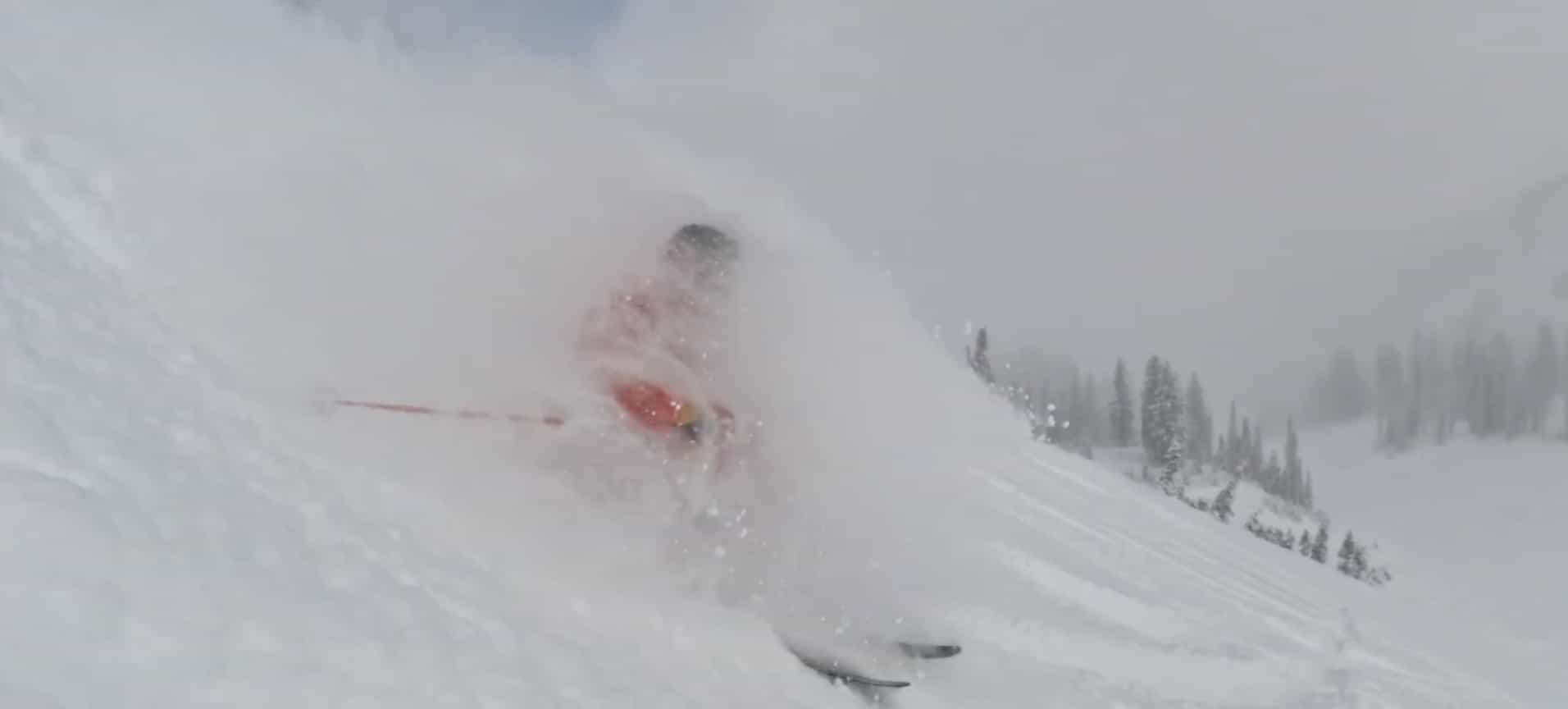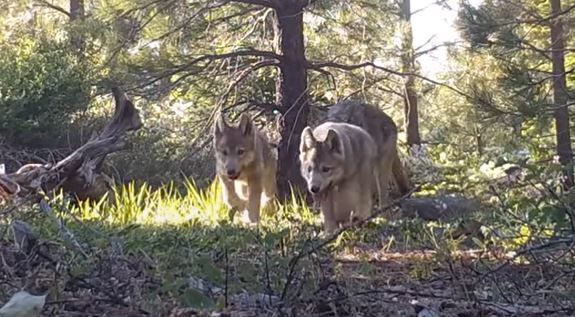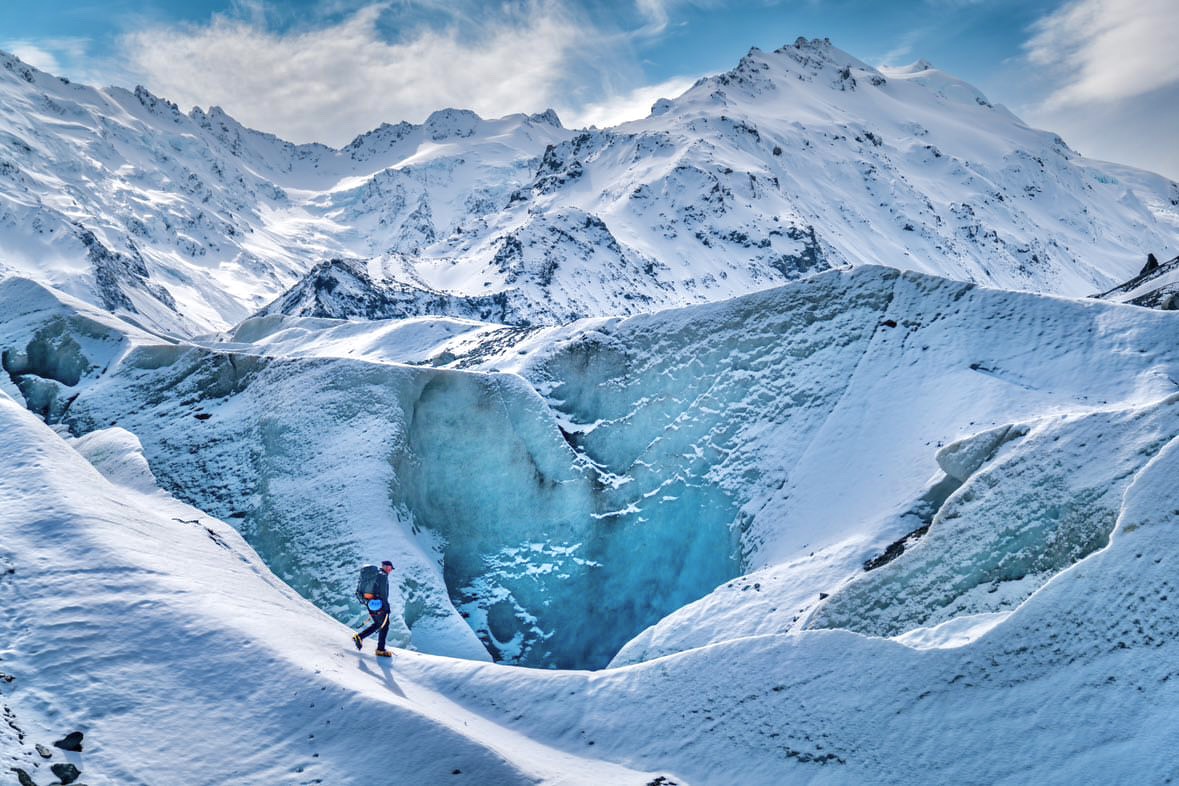
Trip Report From December, 2024
One look and it hits you like a snowball to the kisser: a glacier is a stronghold for all that is epic about winter.
Its rugged, typically mountainous terrain is perennially snowy. And it’s been around since the last ice age, even before there was language to describe ice.
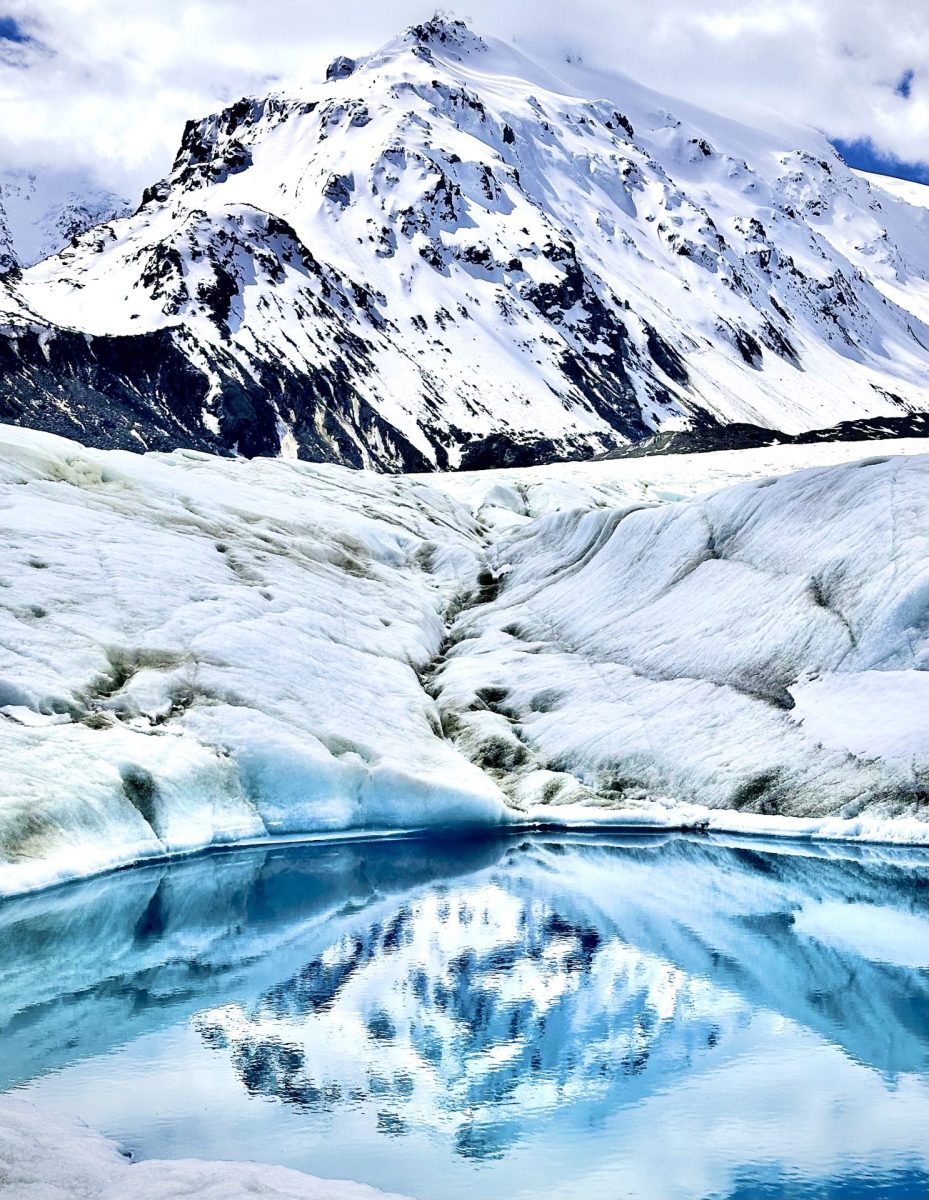
Out there, on a big white carpet, the proverbial ‘simmer’ gets turned way-way low on work-a-day worries while Time itself somehow slows to a pace which is at once difficult to fathom yet feels naturally right.
No small undertaking to get to yet more difficult to turn away from, a glacier grows its own unique allure, and grows on you.

In Aotearoa New Zealand, Tasman Glacier is the leader of the ice pack.
Roughly fourteen miles long and sprawling thirty-nine square miles, Tasman Glacier is a big daddy roosted at the head of a stunning valley which bears its name, within Aoraki Mount Cook National Park.
When it comes to New Zealand’s wildlands, be assured BIG things do come in small packages. Here, a relatively modest geographic scale no less possesses certain dramatic beauty which quickly mesmerizes, and coyly conceals the fact that wild New Zealand reserves the right to deliver a mighty smack at the drop of a gum boot.
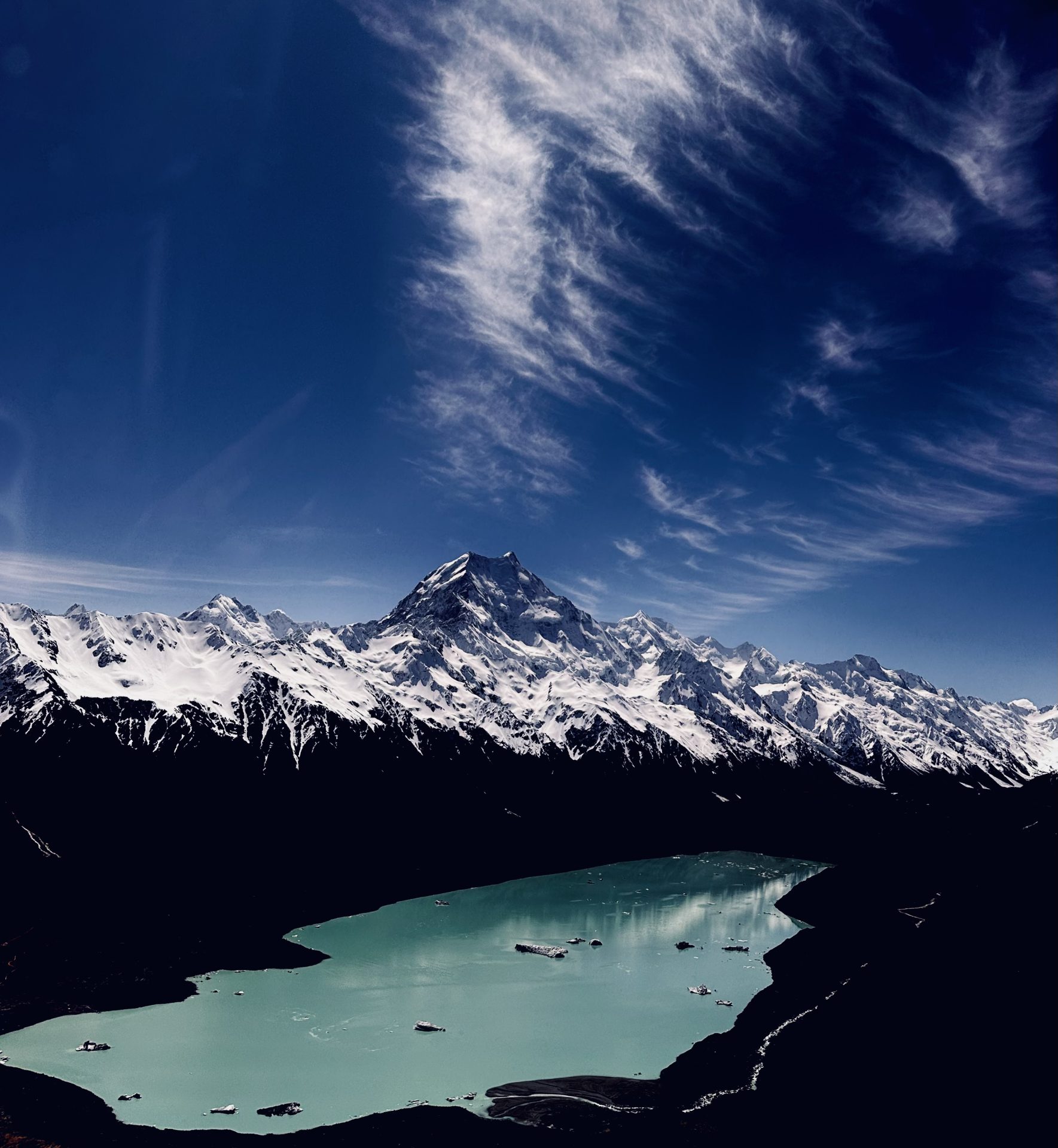
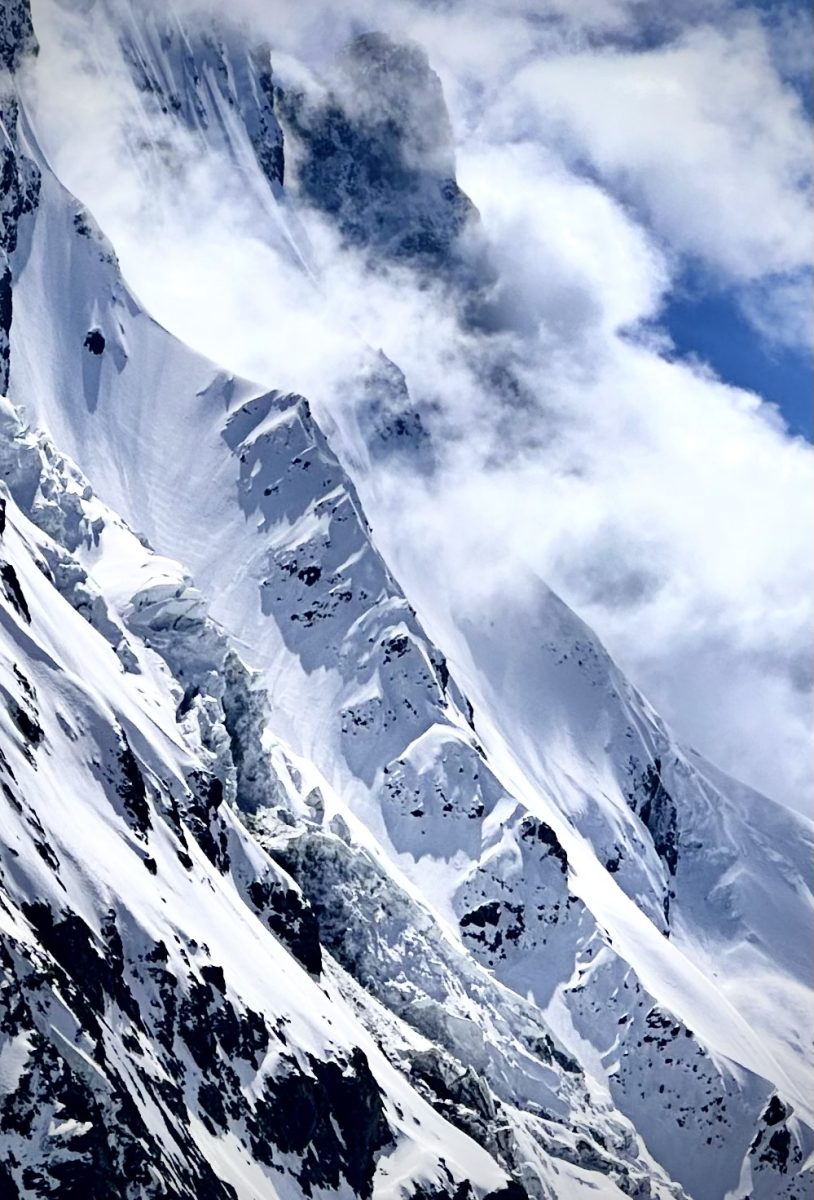
To even arrive at the Tasman’s fortress of solitude requires first, a picturesque transit over its long-spanning lake.
Unsurprisingly humankind has been drawn there for generations, so much so that it was setting and scene to Aotearoa’s premier foray into commercial ski operations, on grunty Ball Glacier.
But that was then. Fast forward to unsurprisingly find that Time has marched past Ball Ski Area, yet attraction to the Tasman remains strong.
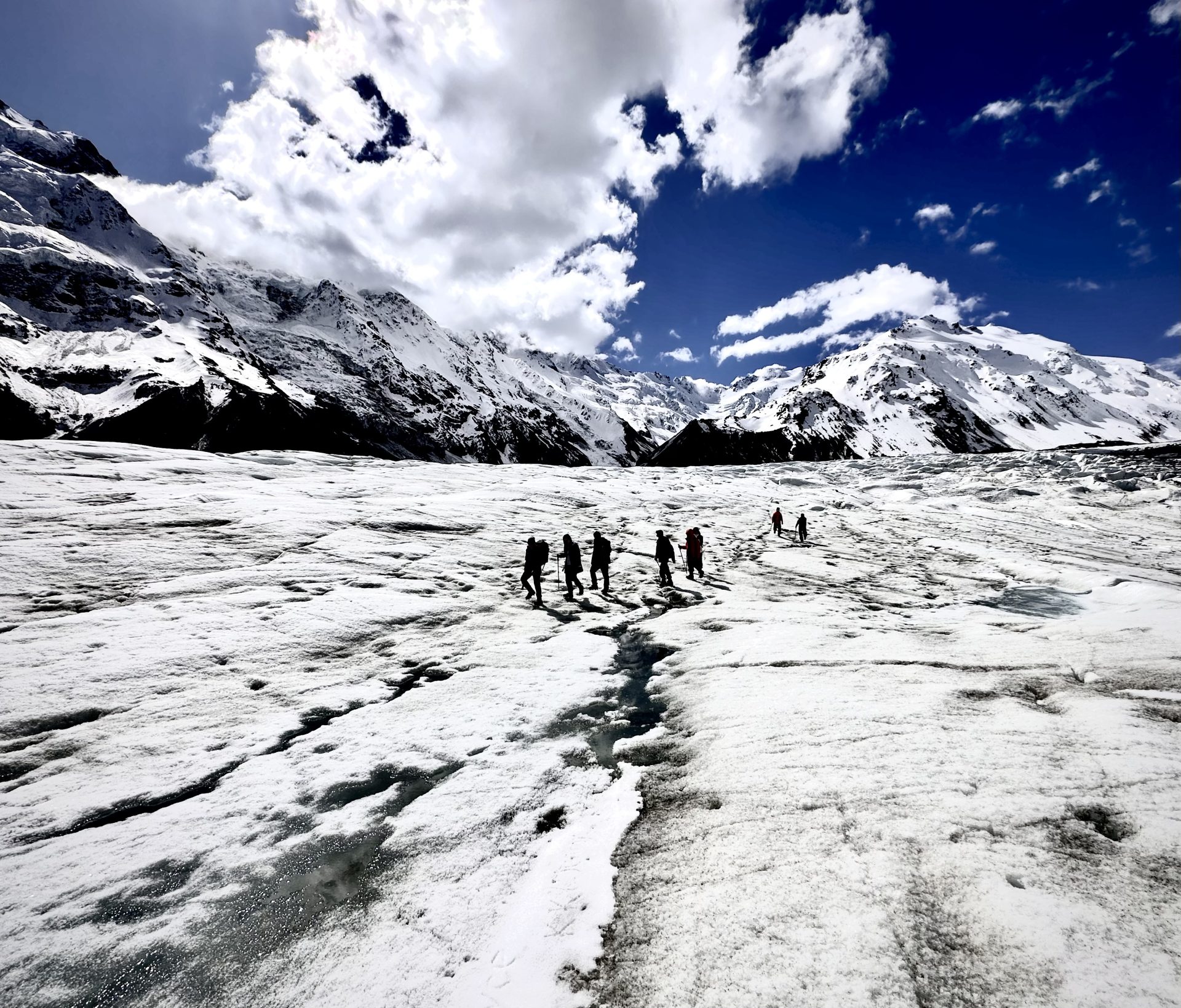
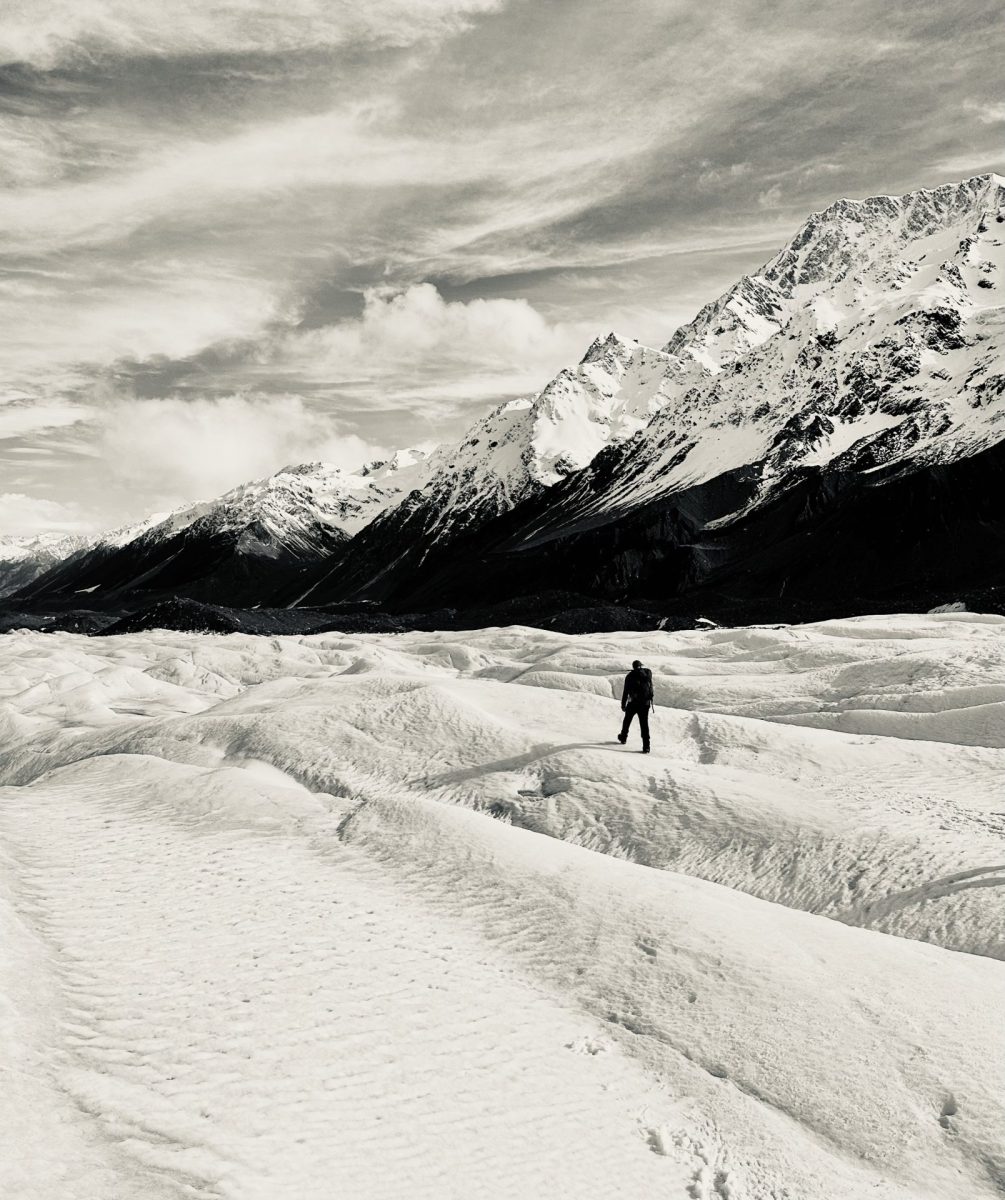
Aside from aerial access via historic (and epic) ski planes, a mainstay recreation upon Tasman ice is glacial trekking. It’s as near to a planetary time warp as humankind can step, and it literally unfurls at the crampon-ed boots of those who dare…
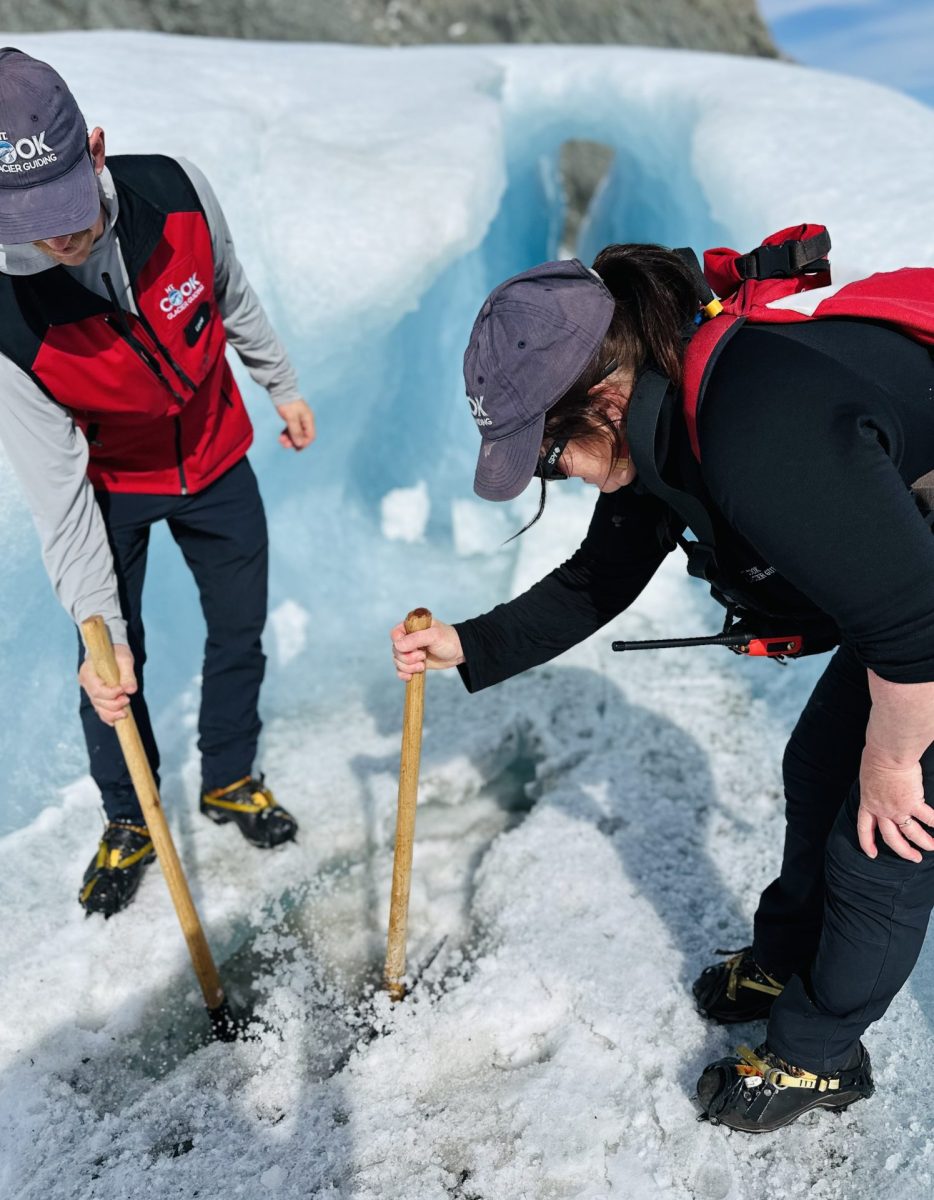

Now, to say it straight, it’s a bloody-big chunk of old-old Earth we’re talking about, so naturally there exists potential pitfalls which we tiny, fragile humans would do well to avoid. This is where skills of a reliable guide rise to shine.
Matriculating Aoraki since 2016, Mount Cook Glacier Guides[MCGG] is an off-shoot of nearby Fox Glacier Guiding. And the professionalism in their presence feels as natural as lichen to rock. If good vibes were crampon straps there would be no misfits here (or not the negative kind, anyway).
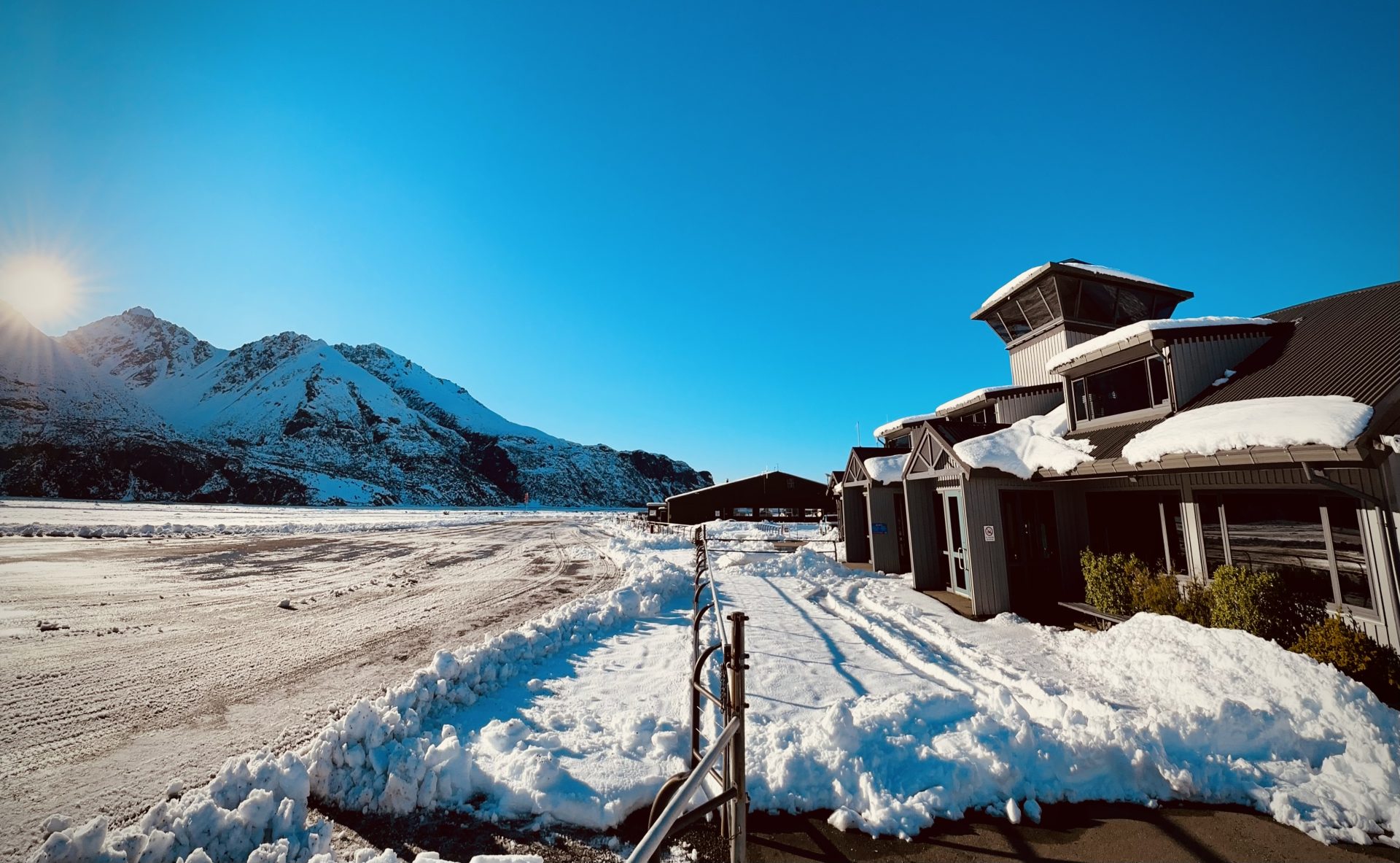

The MCGG squad lifts from Mount Cook Airport; an aviation hub which happens to be a cornerstone facility in the history of recreation within Aoraki Mount Cook National Park.
It is all but impossible to miss–and not because there’s just the one road.
Once arrived to the airport, several moving parts bring a larger (and awesome) process to life.
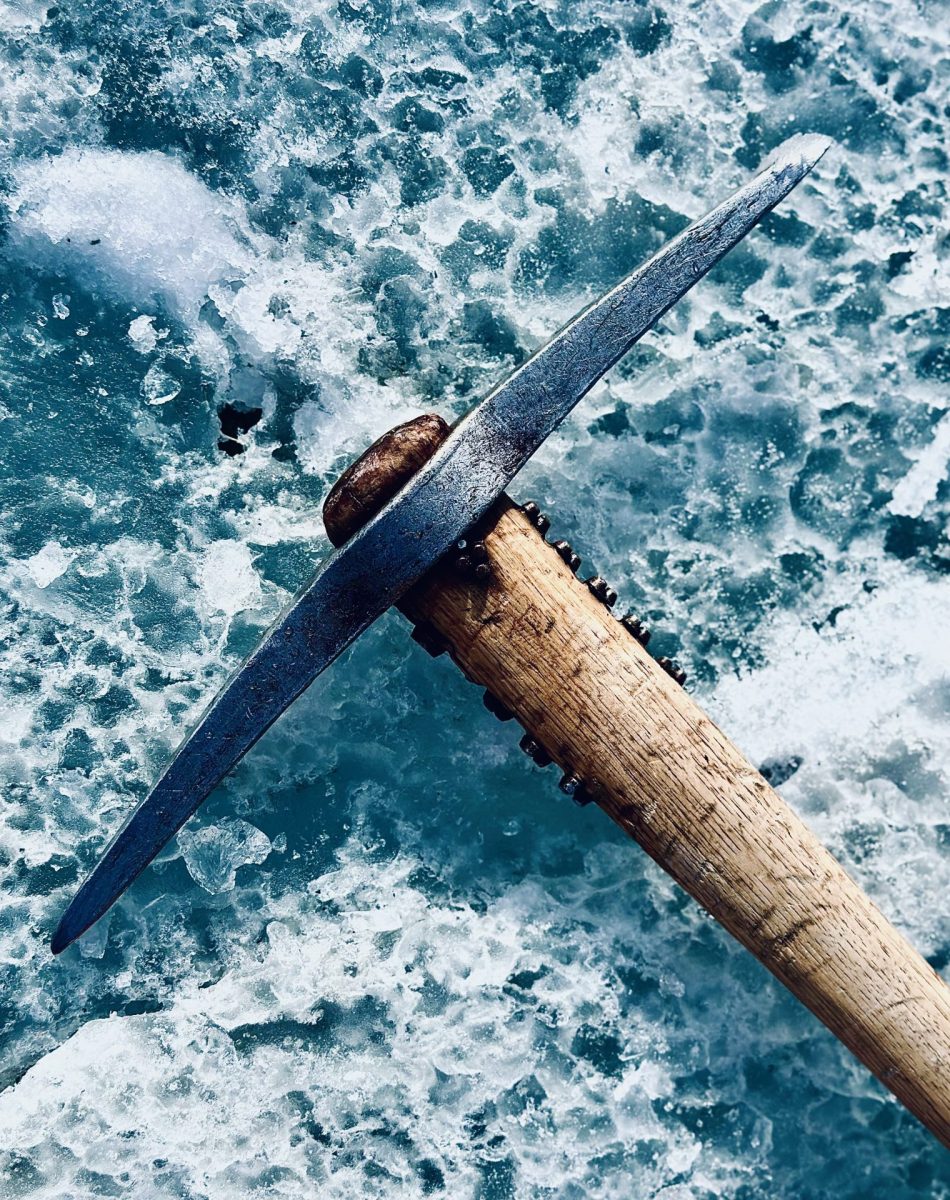

The guides hold forth from an HQ resembling an alpine trekker’s toy chest. Any gear for the field one might want or need is a mere ask away, as is logistical wisdom dispensed by personnel who are lucky-enough to explore glacial ice, day-in day-out under the guise of “work”.
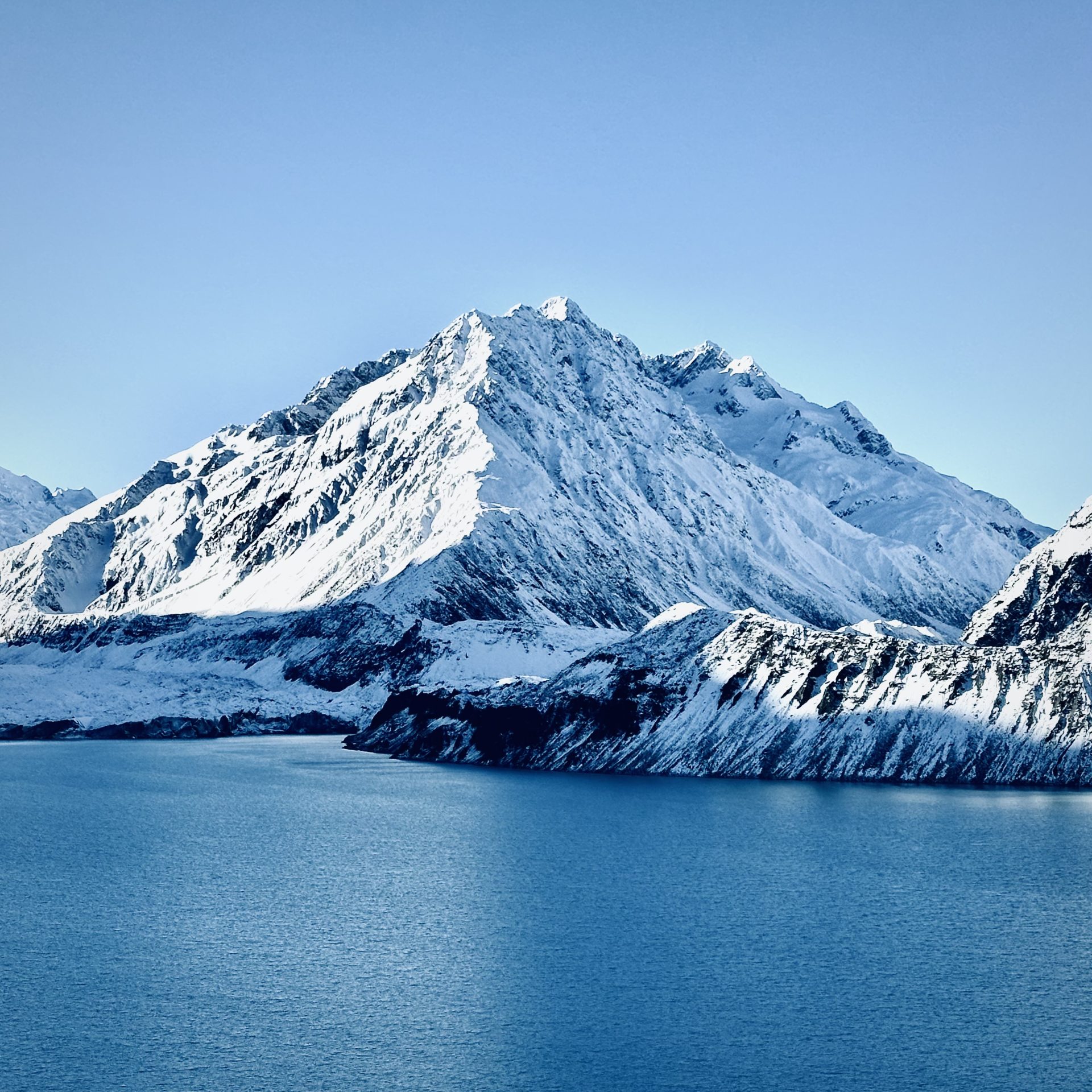
The glacier itself lays the the head of its own terminal lake, within as primordial a valley as can be imagined, so navigating towards it requires a friendly assist from Mount Cook Ski Planes and Helicopters[MCSP]. These boys and girls are smooth operators. It shows in the high and growing higher demand for their services.

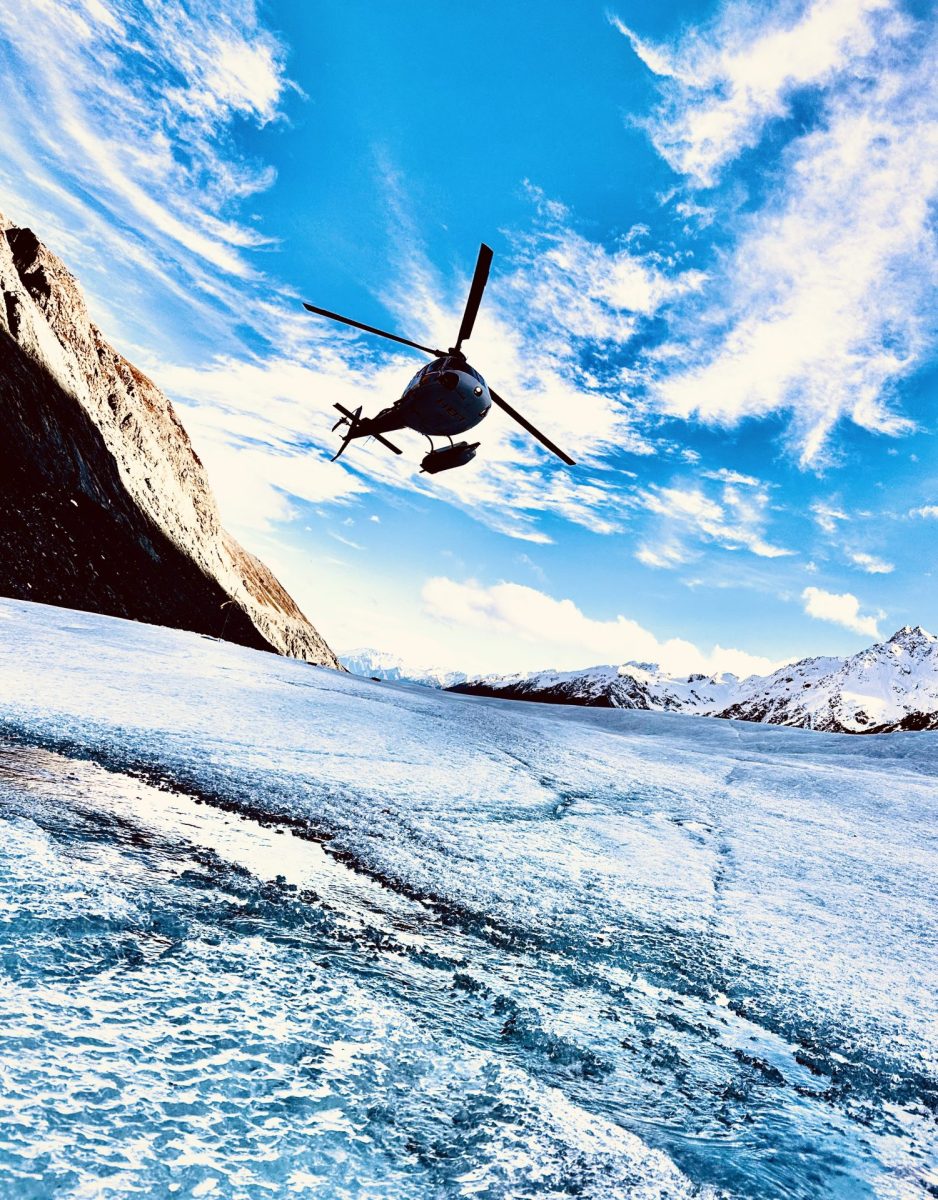
One safety briefing, two squirrel helicopters, and twenty-five minutes later; boots have traded Tarmac and waving grass for Glacier and the cold-hard sinew of the Earth.
From this point onwards, the understandable focus is safest practices for the given day, but the ice steals the show no matter what. Its power is both graceful and uncaring. And the setting itself feels somehow reverent.
Perhaps this is why touching-down upon an out-of-this-world portion of Planet Earth seems to the senses like sun flare and rockfall rolled into one and pressed to the chest; wild stuff, to be sure.
“The alien landscape seems to blow minds,” says Jimmy Arthurs. “It’s undulating terrain, like waves that are changing by day.”
“And the wildest part is, most people don’t even know it’s here.”
Jimmy’s a west coast-plus-central alps glacial guide with roundabouts 400 guide days under the belt. His office is a national park which happens to rank among the planet’s most-beautiful.
All that experience points to an epic truth: a trek on this cold sea might last three hours, but stretches the length of a lifetime as well.
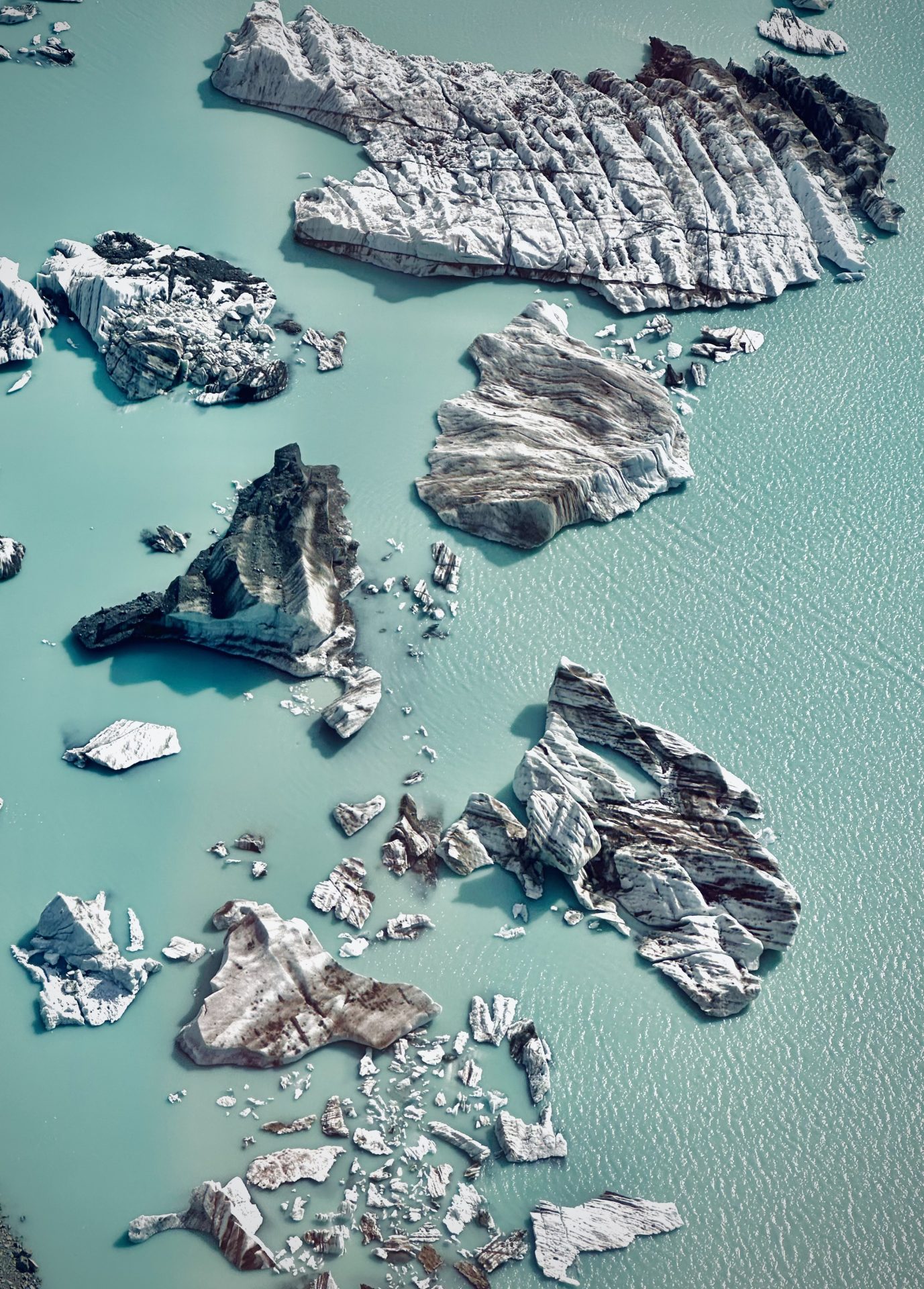
Aside from unrelenting topographic majesty, what commonly draws the eye first are the calved icebergs afloat upon Tasman Lake. These cool creatures move with herd-like grace in a liquid paddock of floro-milk-blue. And from the air it’s easy to overlook that some among these beasts are the size of a car, or house.
Similarly overlooked by the gobsmacked eye–strange as it may read–is the first presence of the glacier itself.
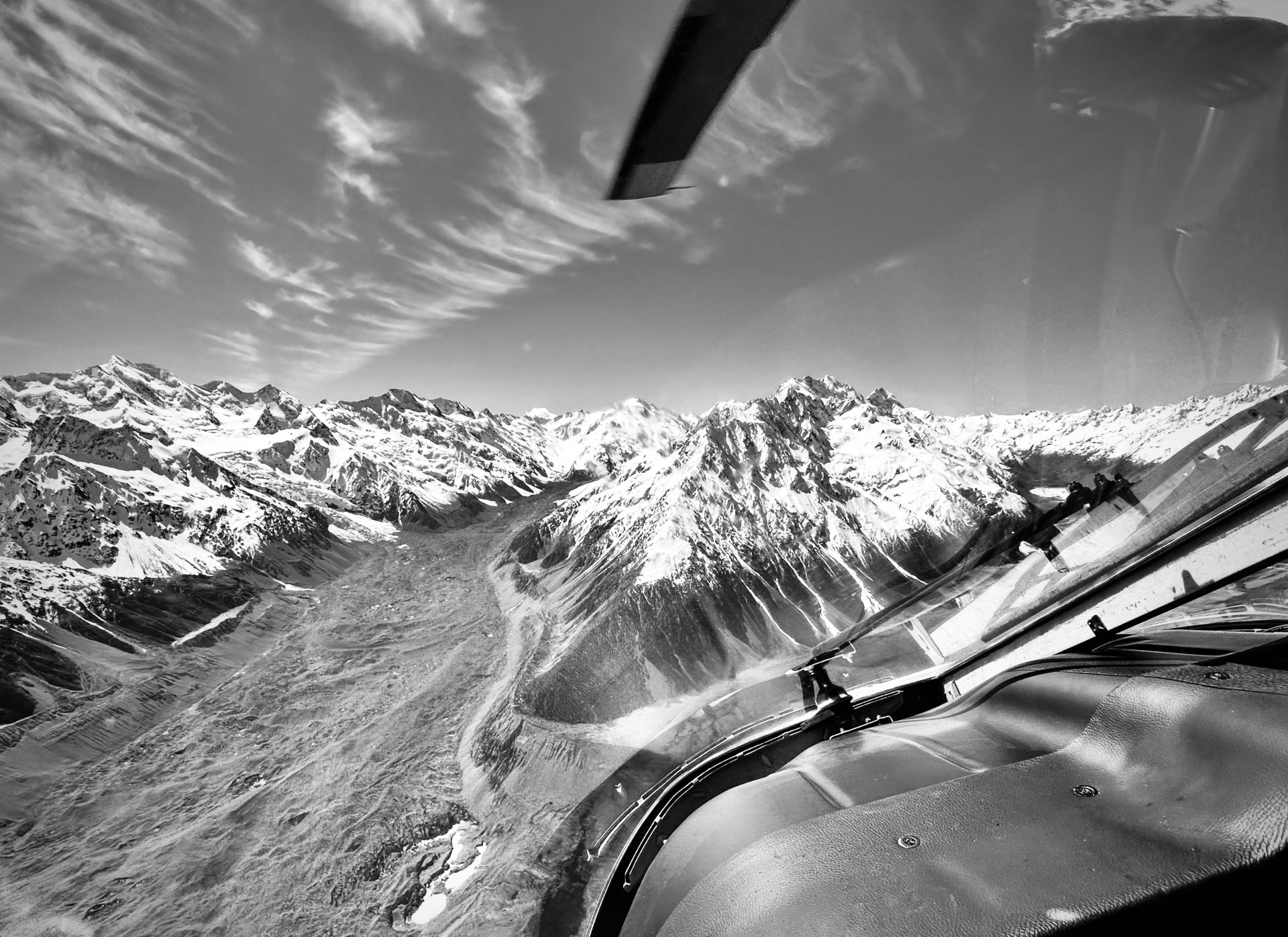
Signature trait to a New Zealand glacier is its inclination to hide in plain sight beneath a thin blanket of near constantly sluffing rock scree. What appears to be a debris field in fact is the dirty tip to an enormous tongue of glacial ice.
That gnarly expanse of covered ice holds potential for treachery, so the route leads up-country, to Hard Ice.
Hard Ice is where Jimmy and his MCGG colleagues feel right at home.
Picture a pack of ax-wielding yoda yetis and you’ll have a rough sketch of this savvy crew. The guides are constantly exploring and relearning their far-out habitat. In fact, to prowl in search of the radical is a core competency of the MCGG job description.
Blue pools, ice caves, waterfalls, wormholes, even the odd historic national artifact; in these parts, it’s all in the neighborhood.
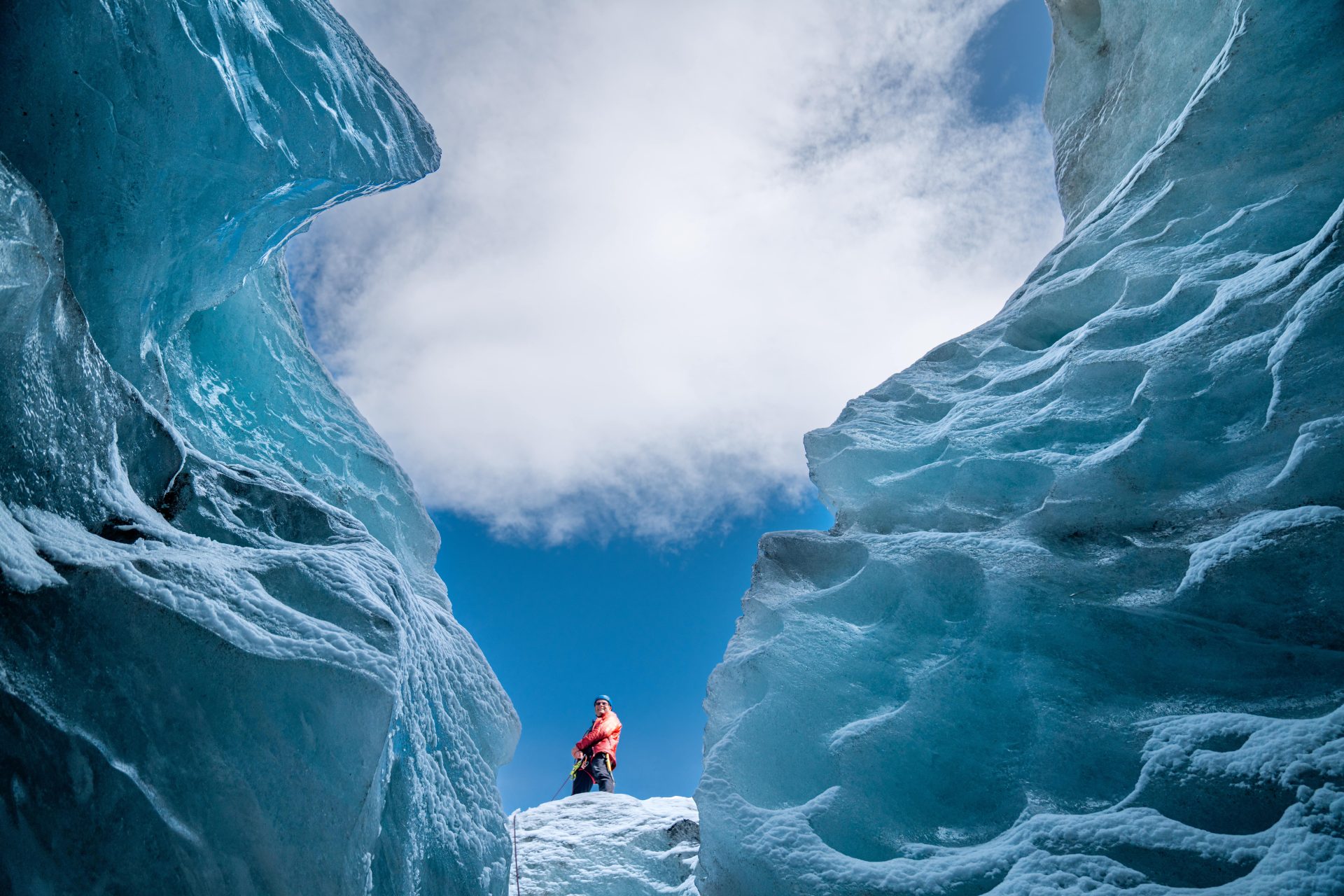
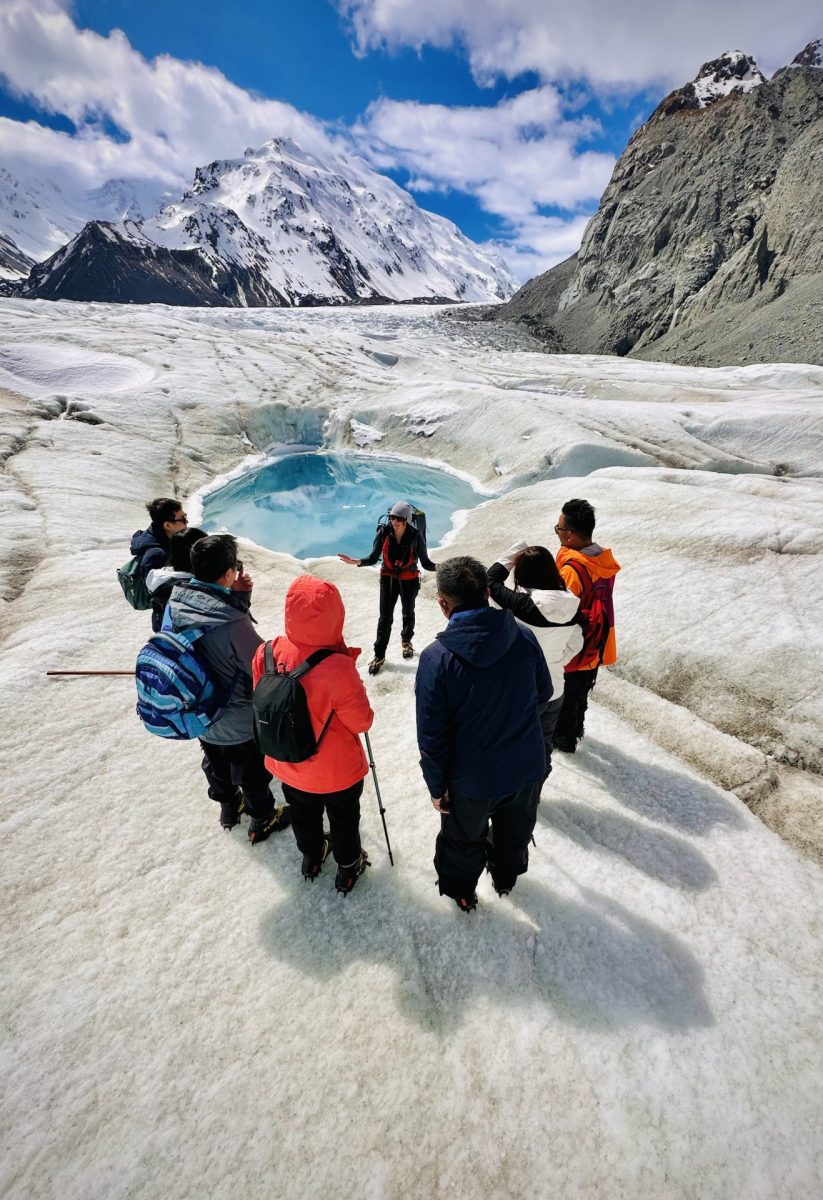
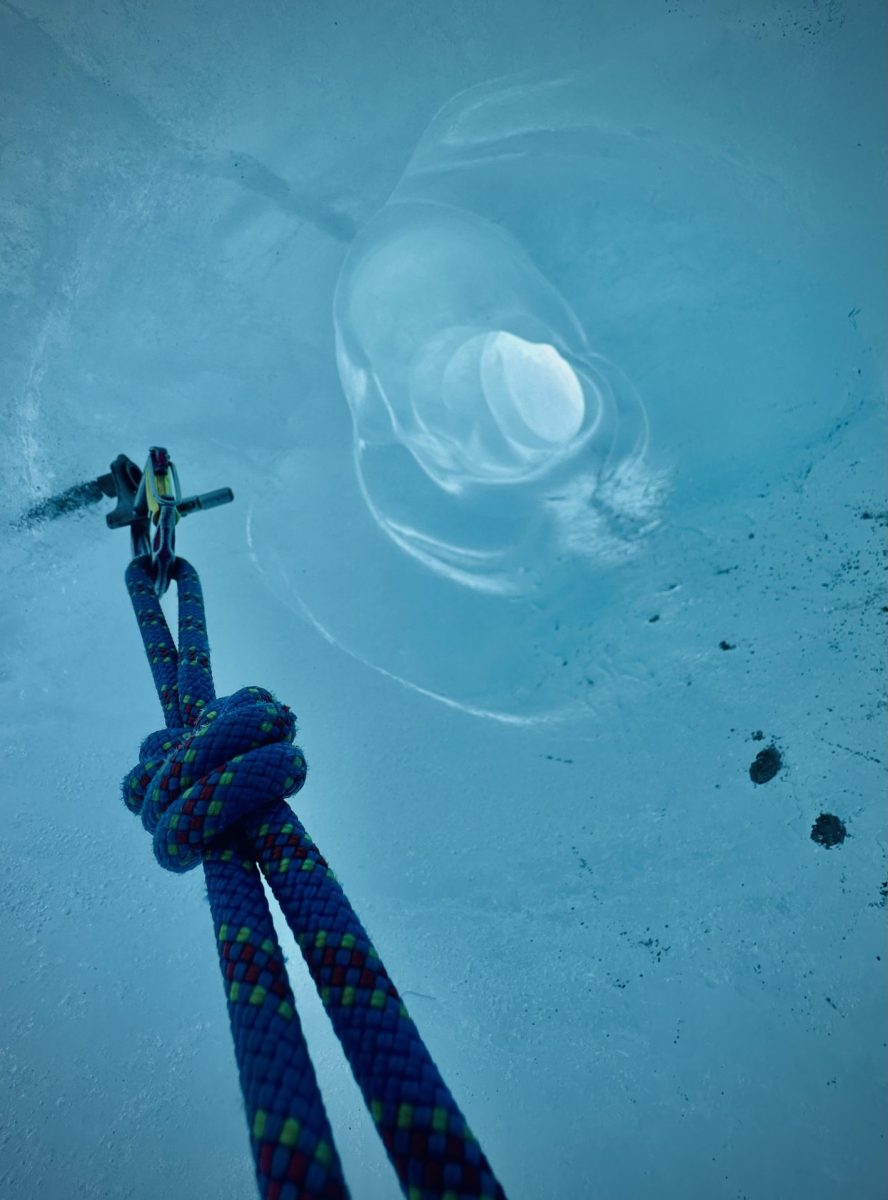
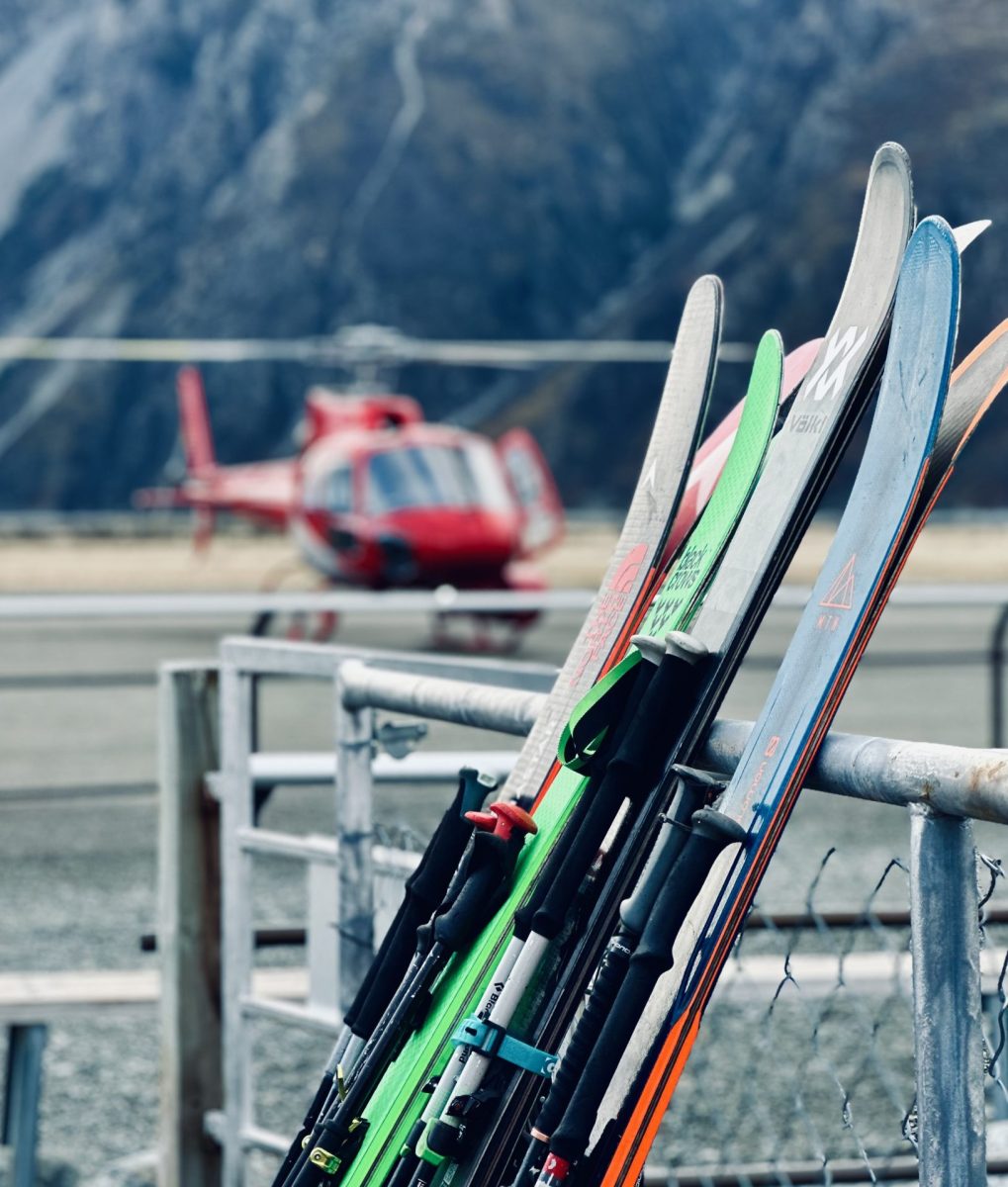
“Alot of people have skied glaciers, which is completely fantastic” Jimmy says. “But being on a glacier’s Hard Ice is a different experience entirely; a place of no snow and, generally, just solid ice. Every unique nook, cranny, or little hole is there to be discovered, explored, and learned from.
“It’s right amongst the tallest mountains, on ice that’s moving fast.” Jimmy explains. “Every bend might hide a newly formed cave or tunnel, or something else completely surprising.”
“It’s an environment where no two days are ever exactly the same.”
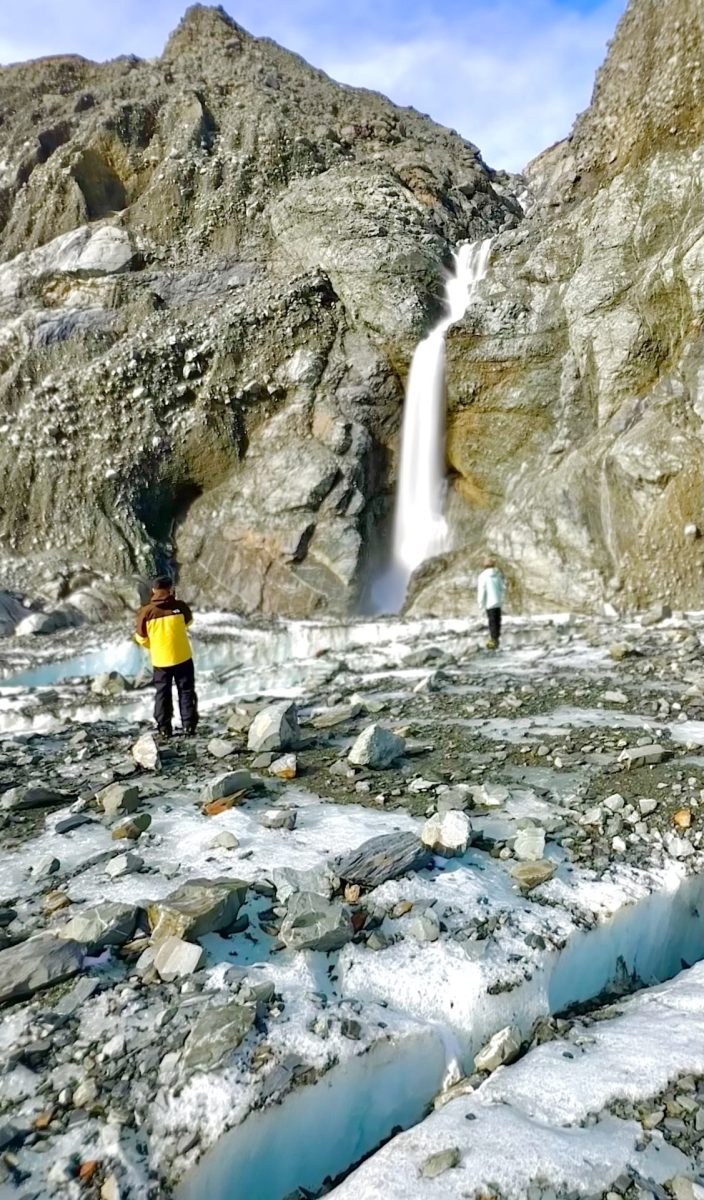
When on-ice there is a slight chance of spying fellow explorers while trekking, but such sightings are as rare as a sun dog, and usually just as colorful.
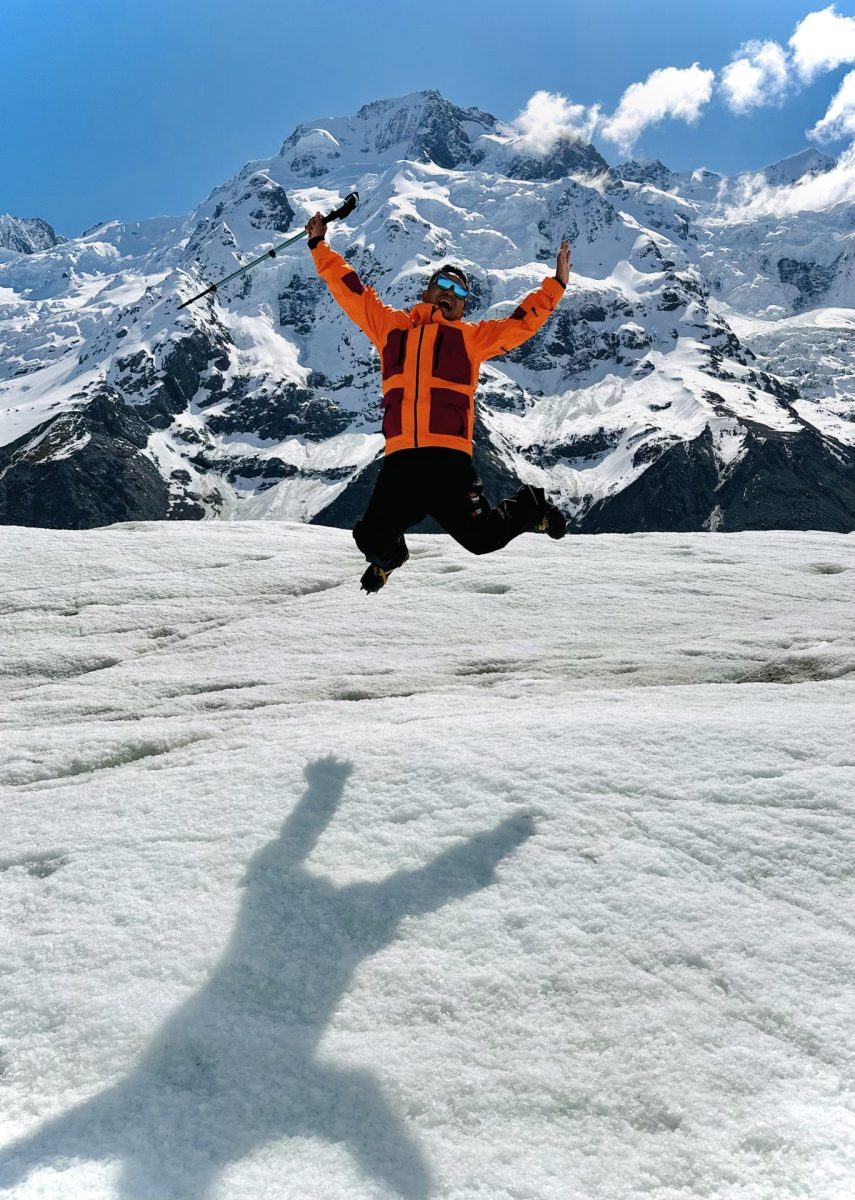
For all intents and purposes, to trek upon Tasman ice is a gutsy dip of all ten toes into a geological pool older than the island nation surrounding it. And the experience is so darn good that to remain on the ice forever would be an easy whim to follow–despite the fact that to stay would likely be fatal. That’s the power of Tasman’s spell; it grabs hold and won’t let go. But it teaches as well. Through ever-present moulins and avalanches, Hard Ice is a master at reminding of true scale.
“You’re always learning because it’s always changing,” Jimmy says. “Then suddenly butterflies and vertigo rise up inside, you might want to get the hell away, which makes for a pretty exciting environment,” he says.

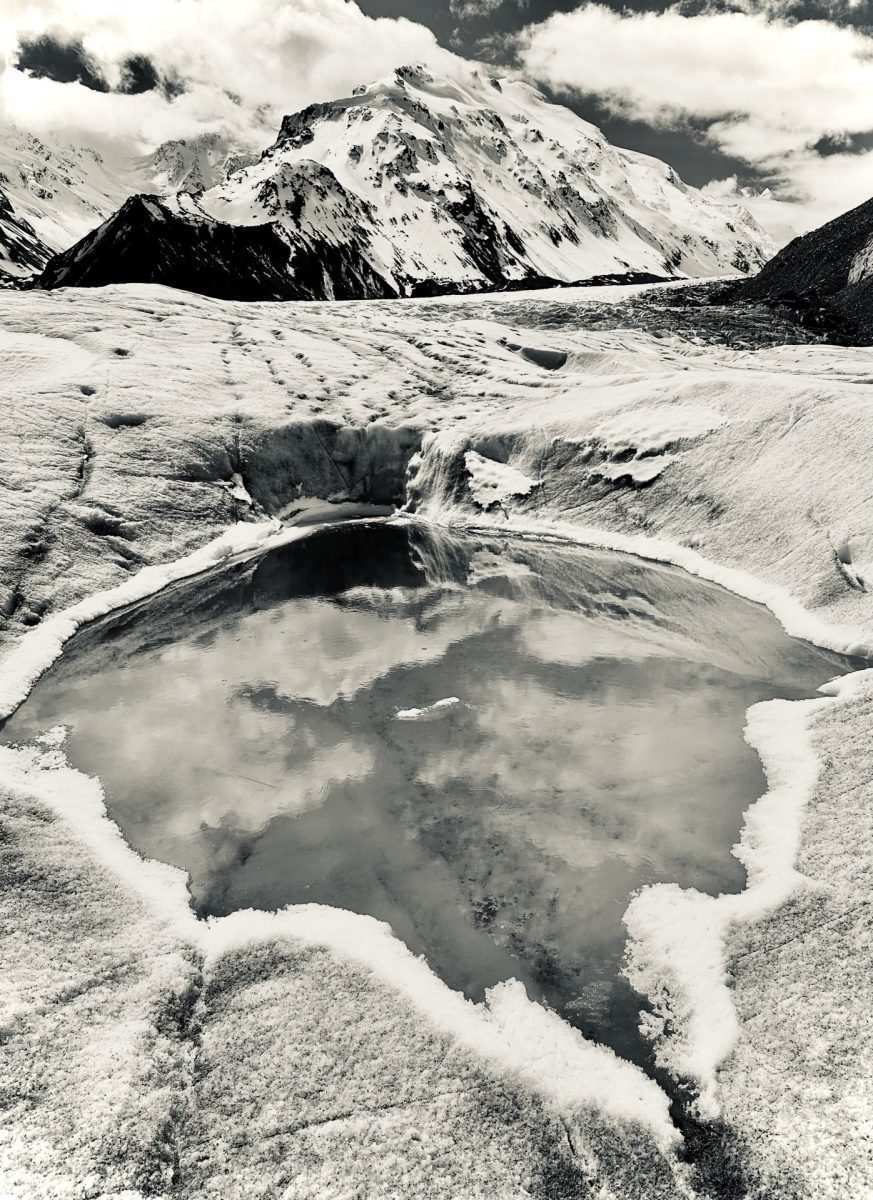
Out here there is no transit. No commerce. Even the almighty Text Message loses clout, and Silence transforms into a physical presence. But it’s vibrance of color which out-glows all of those.
Calm or stormy, high cloud or clearblue, somehow the wild genius of Mother Nature picks the paints which perfectly suit. One glance at the psychedelic glacial lakes confirms that.
These are the hues usually found only in the mind. And the daydreams they incite are a promising indication of a healthy respect for dear Mother Nature.

Like most epic experiences, a Heli-Hike adventure on the hard ice of Tasman Glacier is anything but a common occurrence, which underscores an importance of simply slowing down, squeezing-in as much sensory input as can be stored and hopefully, for at least a limited window, going with the flow of life at a stronghold of year-round winter.
The final thoughts shared by Jimmy says it all. “If you’re coming to New Zealand, do a glacier trip; hands down.”
“This country is a foothold for extreme activities and its glaciers happen to be in tropical environments, sometimes reaching to near sea level and surrounded by forests.”
“Think about it as Extreme, Unique, and totally Unforgettable.”


